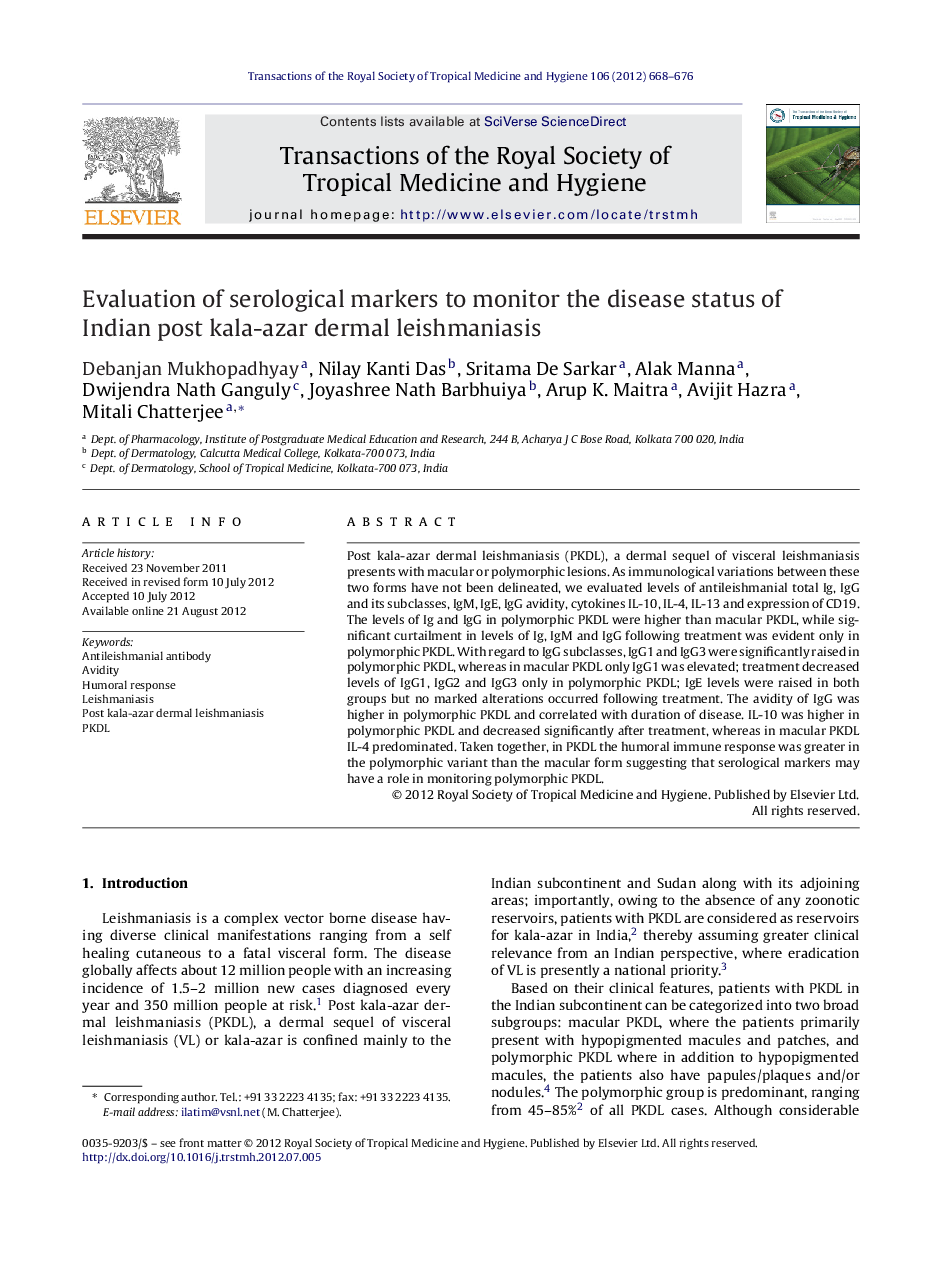| Article ID | Journal | Published Year | Pages | File Type |
|---|---|---|---|---|
| 3420330 | Transactions of the Royal Society of Tropical Medicine and Hygiene | 2012 | 9 Pages |
Abstract
Post kala-azar dermal leishmaniasis (PKDL), a dermal sequel of visceral leishmaniasis presents with macular or polymorphic lesions. As immunological variations between these two forms have not been delineated, we evaluated levels of antileishmanial total Ig, IgG and its subclasses, IgM, IgE, IgG avidity, cytokines IL-10, IL-4, IL-13 and expression of CD19. The levels of Ig and IgG in polymorphic PKDL were higher than macular PKDL, while significant curtailment in levels of Ig, IgM and IgG following treatment was evident only in polymorphic PKDL. With regard to IgG subclasses, IgG1 and IgG3 were significantly raised in polymorphic PKDL, whereas in macular PKDL only IgG1 was elevated; treatment decreased levels of IgG1, IgG2 and IgG3 only in polymorphic PKDL; IgE levels were raised in both groups but no marked alterations occurred following treatment. The avidity of IgG was higher in polymorphic PKDL and correlated with duration of disease. IL-10 was higher in polymorphic PKDL and decreased significantly after treatment, whereas in macular PKDL IL-4 predominated. Taken together, in PKDL the humoral immune response was greater in the polymorphic variant than the macular form suggesting that serological markers may have a role in monitoring polymorphic PKDL.
Related Topics
Life Sciences
Immunology and Microbiology
Applied Microbiology and Biotechnology
Authors
Debanjan Mukhopadhyay, Nilay Kanti Das, Sritama De Sarkar, Alak Manna, Dwijendra Nath Ganguly, Joyashree Nath Barbhuiya, Arup K. Maitra, Avijit Hazra, Mitali Chatterjee,
